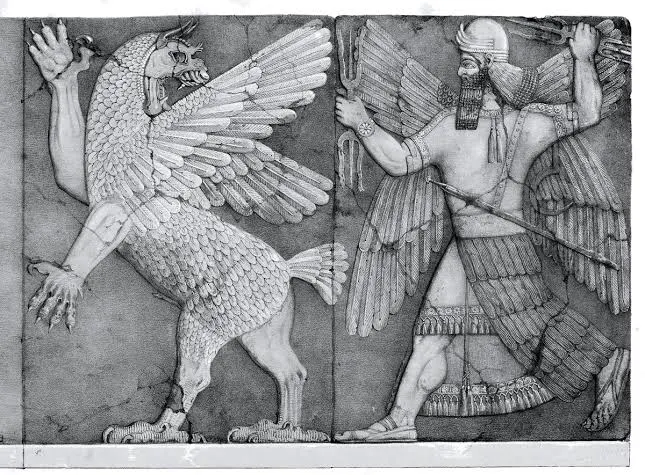Ancient Mesopotamian Religion
Ancient Mesopotamian Religion
The Mesopotamians were skilled artisans, and craftsmen who lived within the safety of the city walls in houses of clay brick.
They were known for their magnificent palaces and temples and made great progress in agriculture and invented the plow wagon which the peasants used for harvesting. This invention helped the peasants to support and feed their families, militaries, and builders. There are numerous clay tablets written in Akkadian language about the epic heroes, mythical beasts, kings, and deities. Rising above the city in layered pyramids, temples dominated over Mesopotamian cities.
According to Sumerian legend, after he created one city, God founded and built five more cities on "clean" sites, named them and made them as a center of the cult.
After this, gods transmitted plans of the other cities and temples directly to the leaders. It is unknown when religion developed in Mesopotamia but the first written records of religious practice dated to 3500 BCE.
According to Mesopotamian religious beliefs, human beings were co-workers with gods.
People worked with, and for gods and as a consideration, gods would hold back the forces of chaos. The gods created order out of chaos, but there was no guarantee that the forces of chaos might not recover and overturn their strengths.
Mesopotamian people, together with their gods, were involved in the struggle to restrain the powers of chaos. Each one of them had their unique role in this struggle. Mesopotamians believed that humans were created for the purpose to work with and for gods toward mutual benefit. In some way, Mesopotamians were slaves to their gods, yet they found their role as co-worker,s for they were repaid for their service.
Gods would supply humans with food and drinks (beer was considered as the drink of the gods) and maintain their world. Gods were not distant entities living in heavens; they lived on earth, in the temples built by the people. In case the temple became too small or too old, Mesopotamians would build the new one on the remains. Such successive construction made the temples eventually became larger and higher, approaching the gods to the people, and people to the gods. The towering ziggurat, in temple complexes, was considered the literal home of the gods. Statues of the gods were daily taken care of by the priests and priestesses.
This included feeding, bathing, and even clothing. The first gods of the sky, the air, soil, and water were the supreme deities and the entire pantheon numbered more than 3,000 deities because for every aspect of human interaction with nature, gods and men together, there was one deity.
Some of the most powerful gods were Marduk-patron deity of the city Babylon and Inanna- deity of love, sex, and war.
It is particularly interesting that the Lilith, originally the Sumerian goddess of desolation, in Babylon became the demon who preyed on people. According to the Hebrew legend, Sumerian Lilith was actually the first woman created for Adam. Once she refused to become addicted to Adam, believing she was equal to him, she fled into the wilderness and gave birth to many demons.
Jahve blamed this woman that it was she who seduced Eve and Adam to reveal the secrets of the garden in Eden.
The Epic of Gilgamesh, the great king, is one of the oldest stories in the world. It is written on a dozen plates. The first half is devoted to the glorification of Gilgamesh, while the second part tells the story about his quest to find a key to immortality which becomes his obsession. Many themes of this story we see in Homer’s epic works as well as in the stories of the Old Testament. The main topic is the problem of human mortality.
Mesopotamian mythology is filled with dark forces; its view of the afterlife was very different from the views of other religions. The life of the common man was marked by hard work, while the religion did not give any hope of salvation that would be expected at the end of his lifetime.
Torn between underground demonic forces that have threatened him at every step and pleasing the gods that watched his every move, he spent his life working in humility, knowing that after the death he will spend time in infinite standing in the dark halls of the underworld. Comparing the elements of Mesopotamian and Ancient Egyptian religion, we find many similarities; in some segments, they are almost identical. Since those two religions mutually permeate, it is easy to conclude that they are pulling together the roots from one 'parareligion "or are in the course of its history due to the geographical closeness gradually elements of one switch to another.













1 Comments
Nice information
ReplyDelete